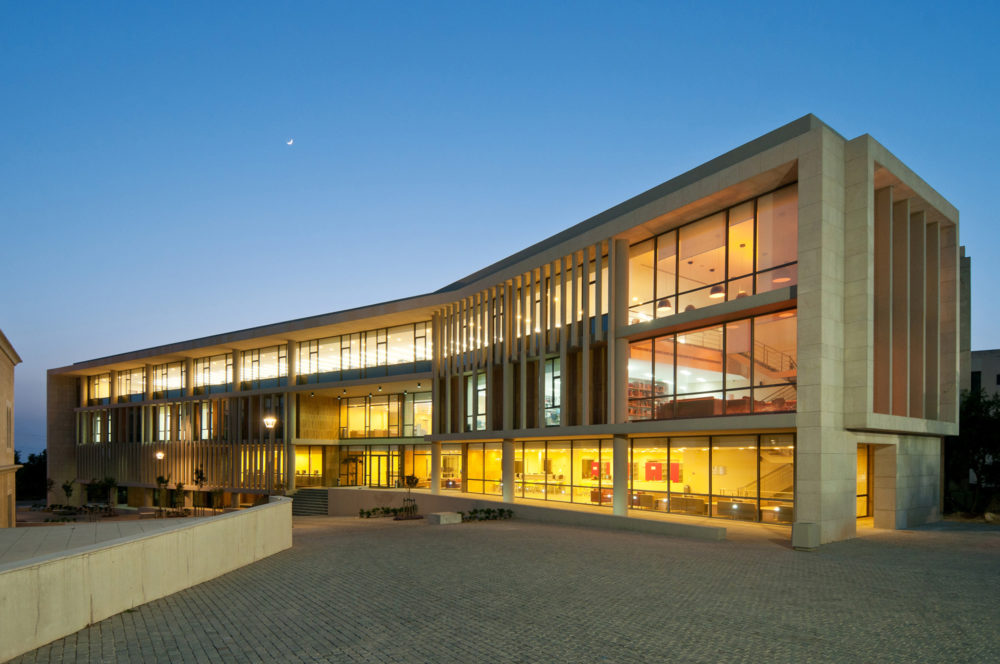
University of Balamand Library Learning Center
El Koura, Lebanon
 Sasaki
Sasaki
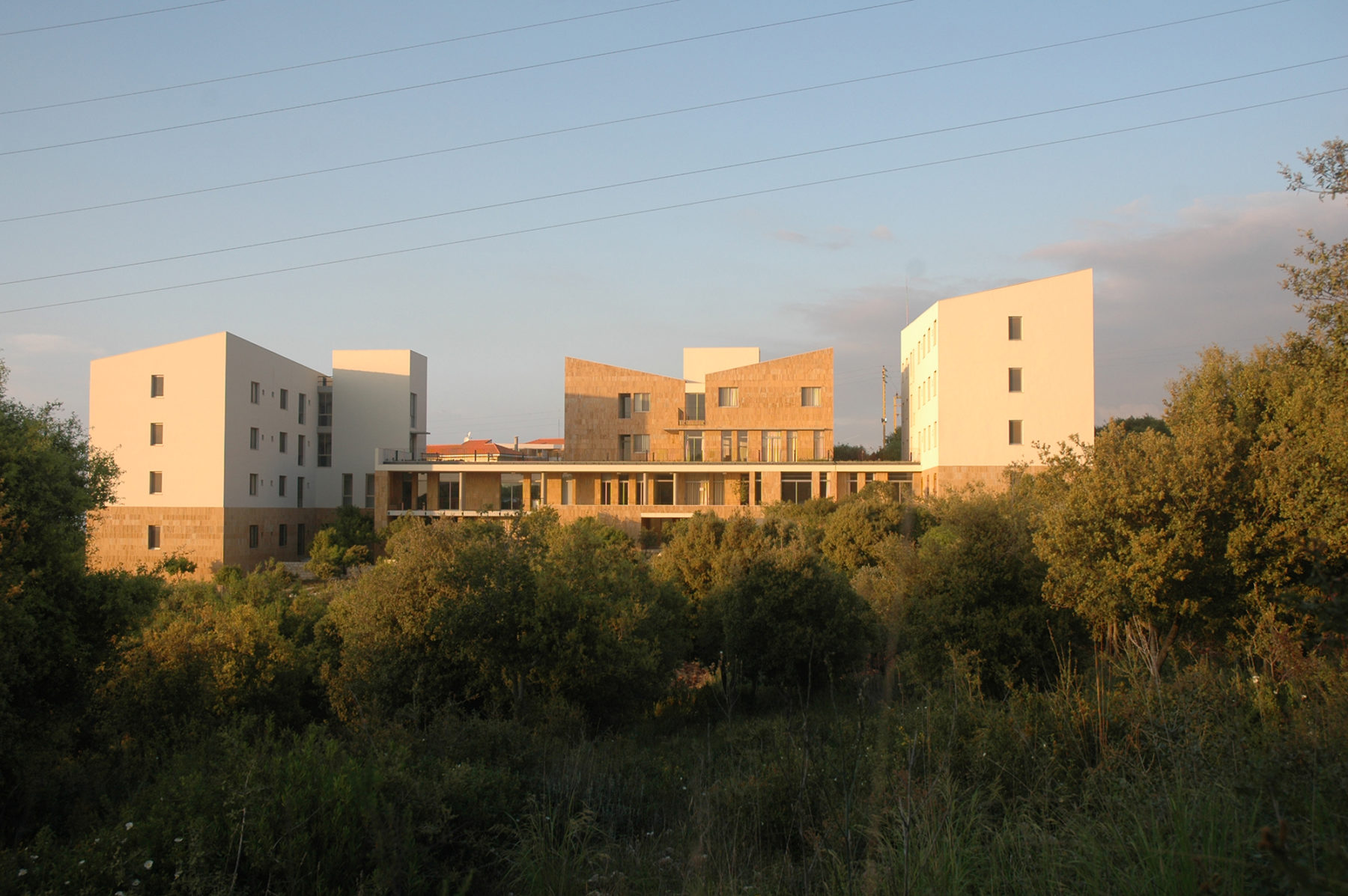
The University of Balamand occupies a spectacular site in North Lebanon on a steep hillside overlooking the Mediterranean Sea. Established by the Orthodox Church, the university is committed to promoting Christian-Muslim understanding, and to developing a secular education based on dialogue, transparency, and resistance to fundamentalism. The university plans rapid expansion over the next twenty years, and will draw students from throughout the Middle East. In response to this premise, Sasaki’s campus master plan identified a new residence hall for female students as one of the first buildings to be constructed on campus. The residence hall, situated along a steep rock plateau sprinkled with young oak trees, is conceived as a series of small individual buildings terracing along the site slope and interconnected by a building bar that defines a ridge through the terrain.
The individual buildings are expressed as self-contained dwelling groupings, housing 190 students in total. The living units are organized into two typologies: suite-style shared apartments and single bedroom units with clusters of common services. Larger public uses like fitness and recreation are concentrated within the connector building, while smaller common uses like group study rooms and lounges are sprinkled at different levels of the various buildings, providing destination points along the complex for all students to come together.
The interior building platforms are coordinated with exterior terrace levels providing a sequence of spaces where program and landscape spiral around the topography, weaving a chain of indoor-outdoor relationships that balance sun with shade, public with intimate, and activity with contemplation.
The materials of both landscape and building are taken from the site itself. Local limestone is the predominant material, featured in the preserved site’s rock outcroppings, the dry-laid stone garden walls, the textured building retaining walls, and the smooth stone veneer of the higher building envelope. Other sustainable strategies include an extensive green roof of vernacular plant material over the building’s podium and 100% natural ventilation throughout the building.
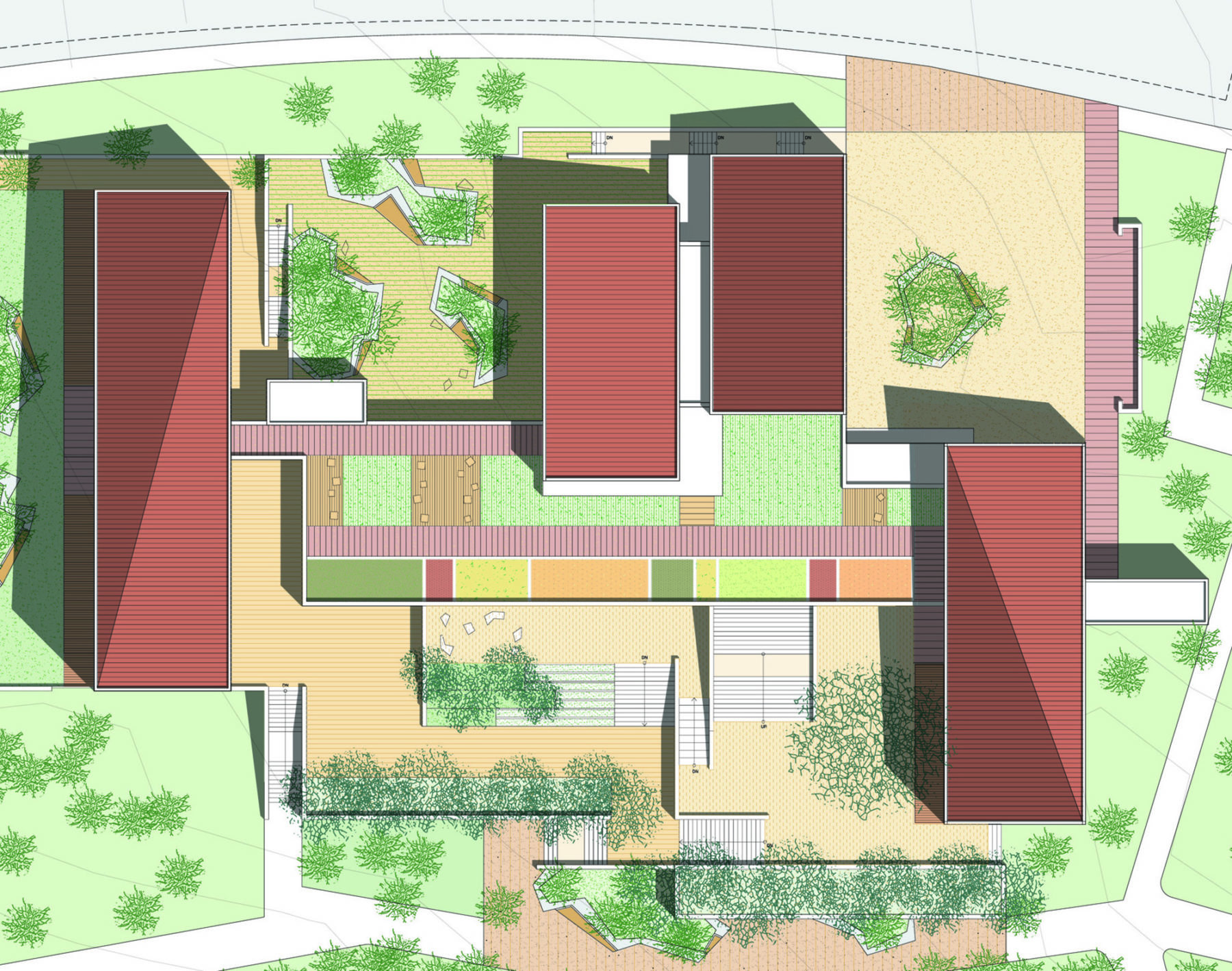


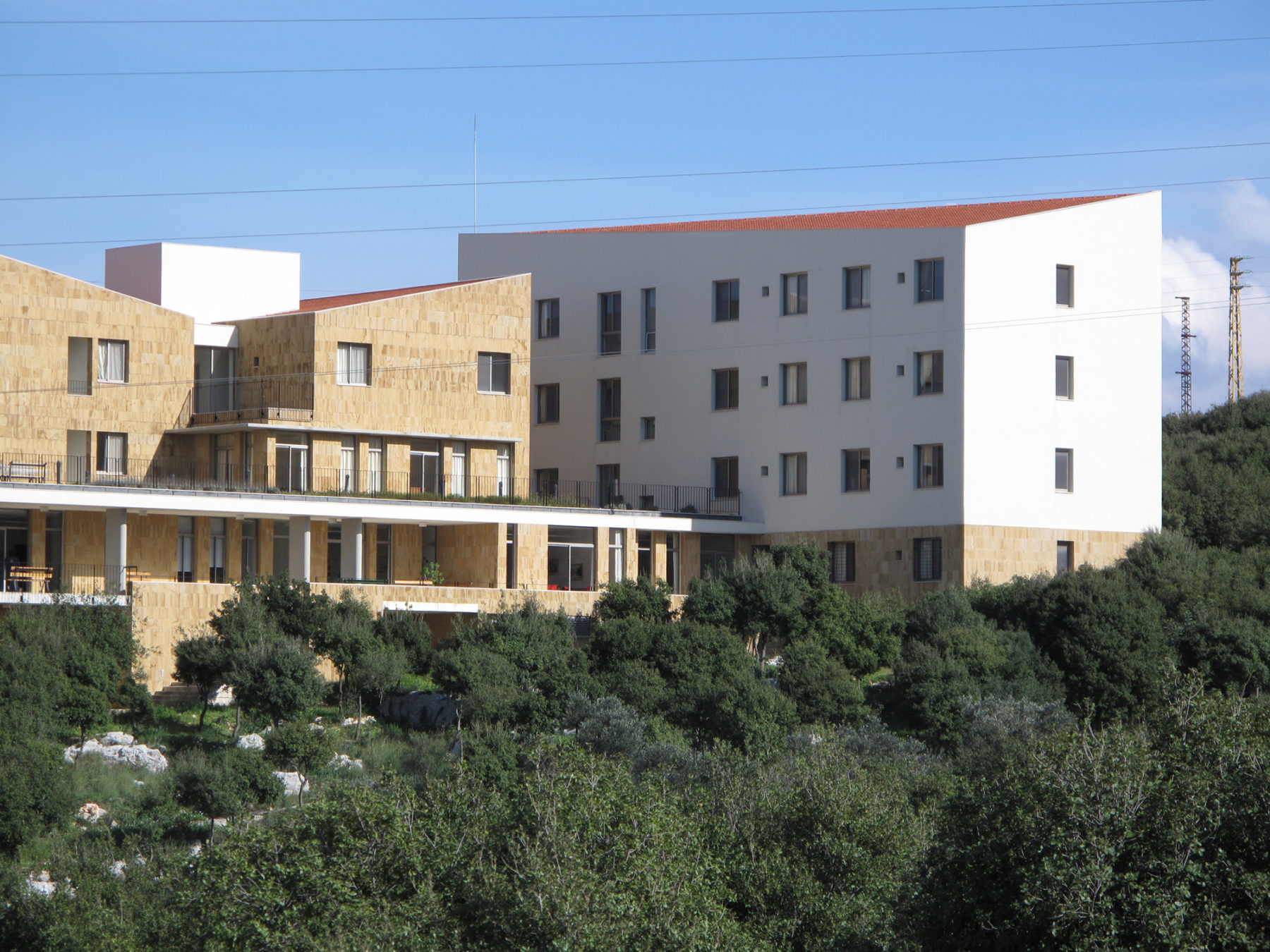
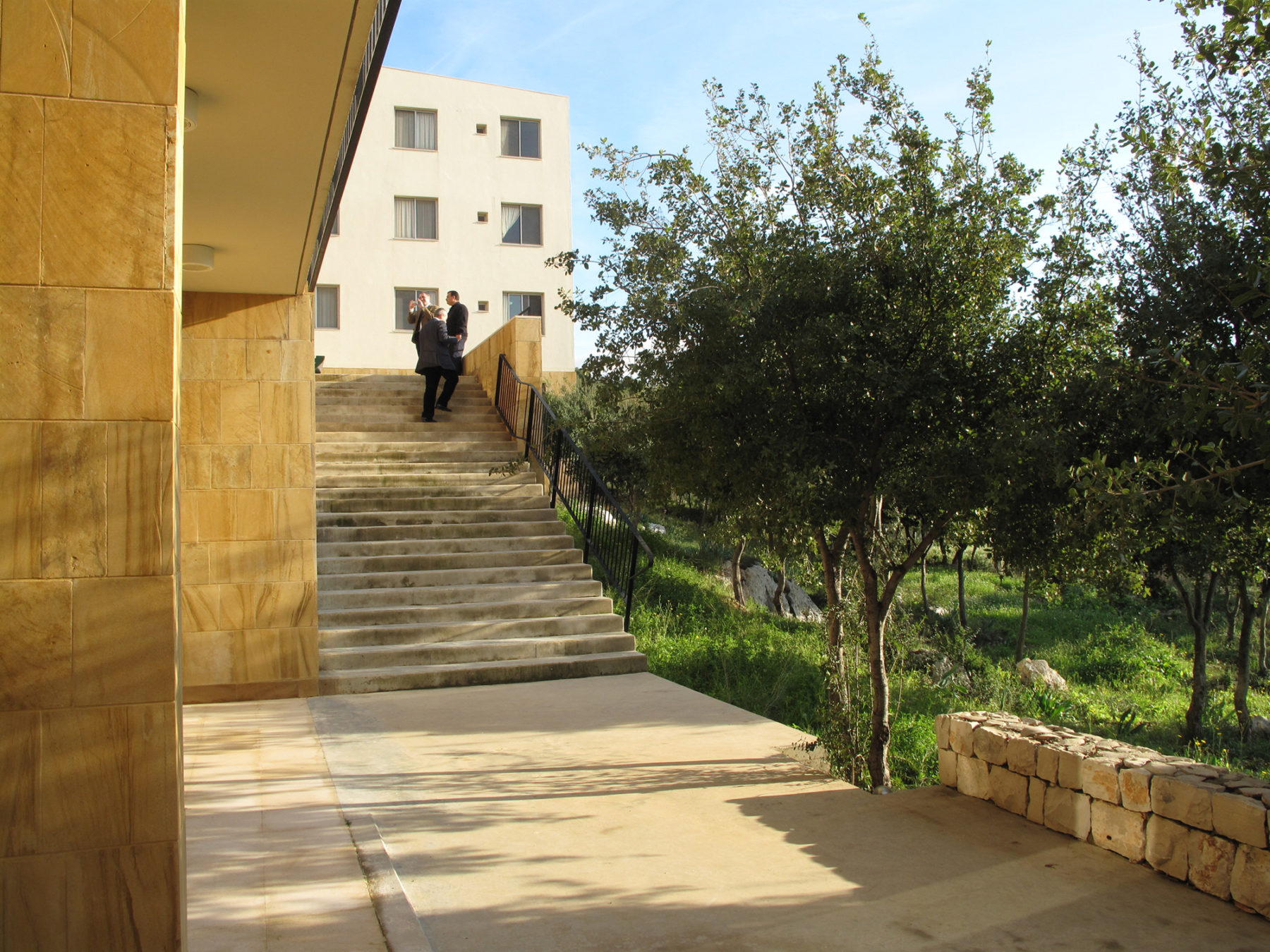
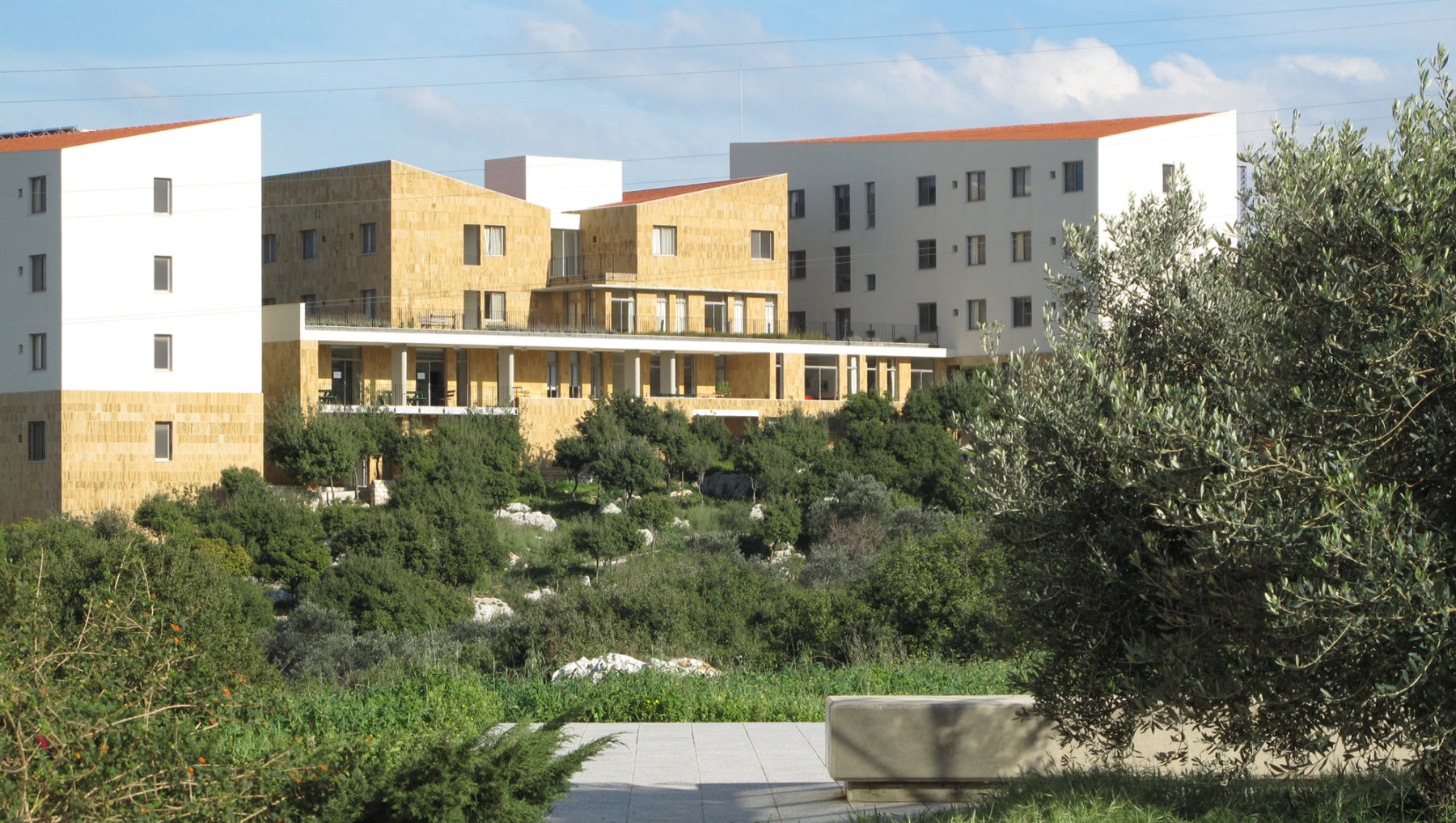







For more information contact Dennis Pieprz.